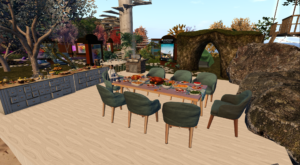In almost the same fashion of using color in film, special effects in movies are […]
Storytelling Video Project Proposal
Project Proposal Project Script
Digital Storytelling Look-Back
I already have taken the Digital Storytelling class within the Digital Storytelling course, the evidence […]
Reflecting Briefly on Motivation
For the last few years, it has become increasingly more common to be working from […]
Can You See What I’m Hearing?
There are multiple elements to creating a successful production that helps with engaging an audience—everything […]
Uncanny Valley Phenomenon
Uncanny valley is something that everyone, once or twice at the very least, has experienced […]
Coloring Art in Creative Settings
Colors have always been an important part of storytelling. Colors help with showcasing where a […]
Digital Storytelling Development Checklist
Premise and Purpose Audience and Market Every quarter, there is something added to the storytelling […]
Healthcare, Wellness, and Access in XR (Extended Reality)
Being able to showcase a welcoming environment catered to specific people/to support specific people is […]
Director’s Staple (Familiarity in a Film)
With the lack of movies that I have seen, I really don’t have a succinct […]



